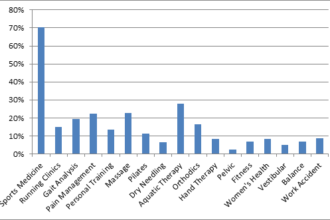What happens when your carefully crafted healthcare marketing plan causes your phone to ring? Prospective patients are calling your office. I can hear the phone ringing now. Well all-right! Good job! Whoot. Fist pump! But wait. There’s a big problem. People are calling, but nobody is answering the phone. Oops. The designated “care coordinator” is busy, in a long conversation with the first person to call. Call tracking data would later reveal that, in the meantime, calls from several other people were routed to a voice mail system. Oops, again. Callers—prospective patients—did not leave a message or call back number. This soap-opera should be titled: “Murder After the First Ring,” or “The Really Nice People Who Answer Your Phone are Secretly Killing Your Business.” Sadly, it’s not a fantasy. It happens frequently. Just recently, we uncovered this real-world problem in the course of staff training work with a client. We were able to track inbound calls to this women’s health specialty practice from an ongoing Internet advertising campaign. Many inquiries. But we discovered that, in the course of about a week, 75 phone calls had been shuttled to a voice mail system. Of these, only one caller to left a message. And 74 were “hang-up/disconnect.” Maybe a few will call back later…maybe not. There’s a strong suspicion that, with no “real person” to answer their immediate interest, their next call would be to a competitive medical practice. In the worst case, let’s say 70 prospective new patients who went elsewhere. Promotional costs have been squandered, and opportunity for new business is lost in a few days. This illustrates the importance of answering inbound calls immediately. This is especially important for calls that are inspired by an active marketing campaign, and callers have a strong desire for more information and a willingness to set an appointment. Your office phone might be the weakest link in your physician marketing effort. Consider these useful tips and techniques:
- Reality check. Nobody thinks they have this problem. It usually takes a mystery-caller diagnostic effort, perhaps bundled with phone training, to reveal the stumbling blocks to good business. For online or traditional media, a complete system includes more than simply counting calls.
- Have a dedicated number. Having a specific phone line devoted to inbound calls alone (not a roll-over system) is a vital tracking tool. Direct calls can be easily distinguished from routine office business.
- Answer the phone with the advertised name. If people are responding to an ad for the practice name, don’t answer the phone with the doctor’s name (or vice versa).
- Employ layered phone coverage. Beyond the primary person to pickup inbound calls, have a second or third person responsible for “live-answer” phone duty.
- Cover the times that you are advertising. Your campaign is running between 8AM and 6PM, the designated patient coordinator (and backup team) should be prepared to answer calls live.
- Closed for lunch? That’s a convenient time for prospective patients to call, so arrange for non-stop coverage. It’s counterproductive to shut down the office phones for an hour or more at mid-day.
Proper phone skills are a crucial link in a business development. Are you losing opportunity when the phone rings? Staff training helps assure that the phone isn’t the weakest link in your physician marketing program.








